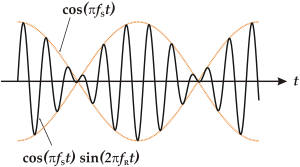When I was a kid we’d get a massive Sears catalog in the mail every year. Must have been hard on the postman when those came out. For more than a century, Sears was the place to get all the essential stuff for living in America — everything from thermal underwear to cast iron stoves to musical instruments. For a while you could even buy a house from Sears.

I swear I had that dinosaur set.
But in the 1950s what I looked forward to was the toys. In anticipation of Christmas, I’d scour the Sears catalog, reading the descriptions of every toy and game, making a list of several pages, then going back and editing it down to the most “realistic” 15-20 items. All despite knowing for a fact that there was no Santa Claus and that what I was most likely to get in my stocking was a note from Dad saying he had paid this year’s installment on a life insurance policy (which was supposed to have some cash value eventually). Toys were not really an option and I knew that. But it didn’t stop me from window shopping the Sears catalog and feeling that pang of desire for some ingenious new piece of frippery.
To this day I enjoy looking at catalogs and websites and eBay and imagining what fun it would be to play with a real certified aboriginal Aussie didgeridoo or a new guitar synth that does everything but make pancakes for breakfast. Thus was this blog born of my wonder at new musical toys to play with.
I have a new item on my wish list (as in “ain’t never gonna be able to afford one of these babies”) as I came across the Horst MIDI Wave Theremin, individually hand made (read: quantities and availability may be limited) by Australian electronics design engineer Horst Gruhle. There are a bunch of straightforward videos on the website that demonstrate its functionality. I always take demos with a grain of salt — after all, it’s being played by the guy who dreamed it up and built every aspect according to his vision of what it should do and where things should go. Having said that, the videos show pretty clearly that the thing can probably do some really fun stuff right out of the box, and lots more even funner stuff with practice. I’ve wanted a theremin almost since the Sears catalog days (no, they did not sell theremins at Sears as far as I know). I tried to build one once, but my understanding of electronics schematic diagrams is sketchy at best and it never managed to produce more than a little crackle and hum. Far better to leave these things to the people who really know how to do it. Enter Horst:
UPDATE: Since there is no pricing information on the website, I asked Horst about it. Here’s his reply:
“Currently, the recommended retail price is $995 Australian Dollars. We have the Theremin on special occasionally and sell it for $795. Sometimes we have promotional offers and “throw in” a trigger-pad and/or a midi-to-USB cable. All Theremins are still Hand Made in Australia. To get the latest price, it is best to contact us.”
In case you’ve ever wondered (and who hasn’t?) a theremin works by using a pair of high frequency (as in radio frequencies) oscillators. One is steady while the other is affected by the proximity of the player to an antenna. If you’ve ever tried to tune a guitar by ear, you probably know about the concept of “beat frequencies.”
When two strings are not quite in tune they can be said to be “out of phase”, i.e., the high part (peak) of the sound wave on one string will tend to work against the low part (valley) of the other, cancelling out the energy of both. In phase energy is additive; out of phase energy is subtractive. Since they are not perfectly out of phase the cancelling is not total, but as the frequencies get closer the cancellation effect happens less… well, frequently. So on a guitar you listen for the phase shifting as you tune, which manifests as a sort of slower and slower tremolo or “beat”. If the strings are 1 Hertz (cycle per second) different, you’ll hear that beat frequency once every second. Scale this idea up to the radio frequency spectrum and what happens is the beat frequency can be basically anything within the range of human hearing. The capacitance of your hand moving towards the antenna is sufficient to cause relatively minute differences in the oscillator, but relative to, say, several megahertz is quite a lot relative to the audible spectrum. So what we hear is the difference frequency of the two oscillators. AKA spooky soundz.

